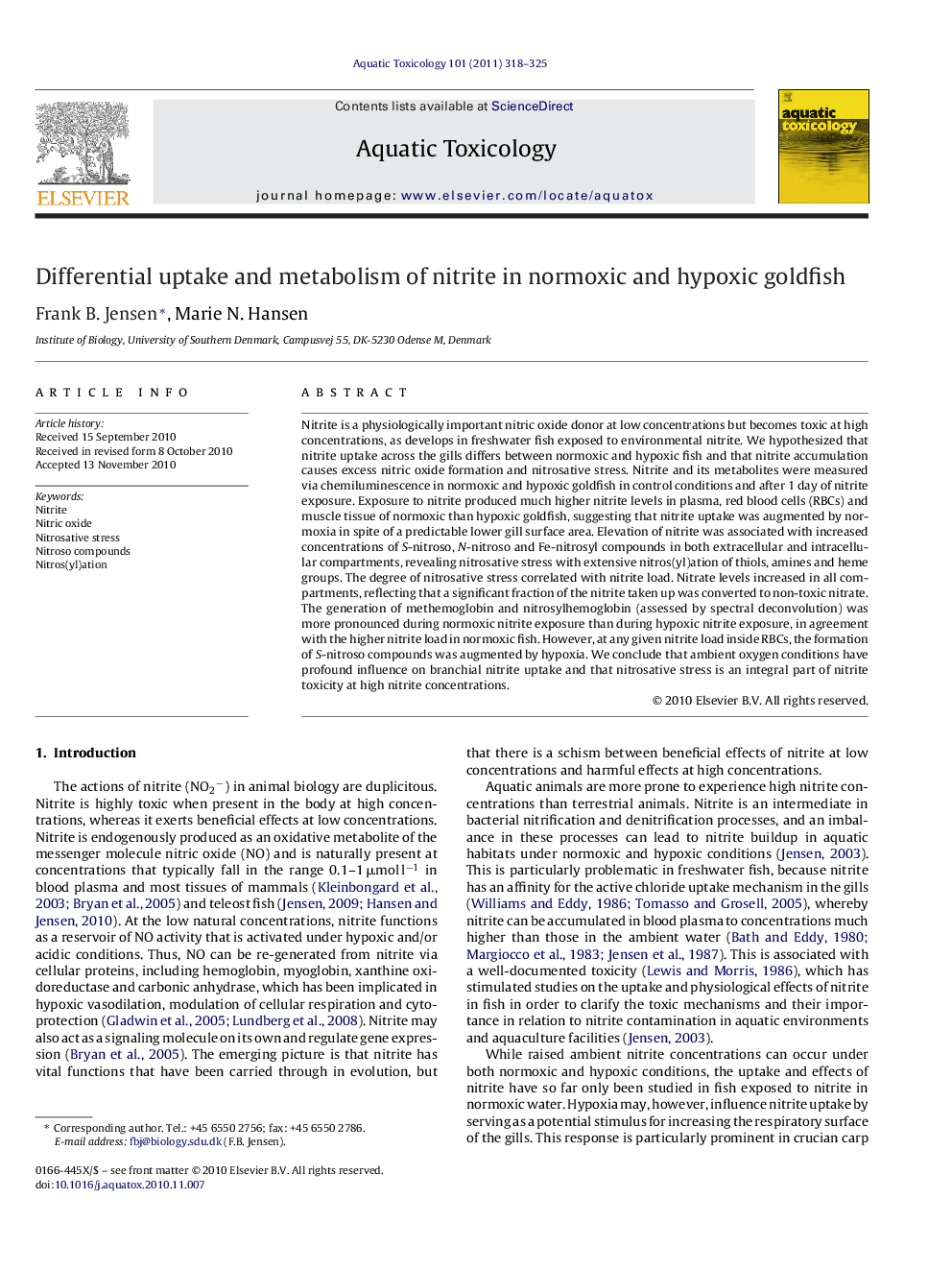| Article ID | Journal | Published Year | Pages | File Type |
|---|---|---|---|---|
| 4530044 | Aquatic Toxicology | 2011 | 8 Pages |
Abstract
Nitrite is a physiologically important nitric oxide donor at low concentrations but becomes toxic at high concentrations, as develops in freshwater fish exposed to environmental nitrite. We hypothesized that nitrite uptake across the gills differs between normoxic and hypoxic fish and that nitrite accumulation causes excess nitric oxide formation and nitrosative stress. Nitrite and its metabolites were measured via chemiluminescence in normoxic and hypoxic goldfish in control conditions and after 1 day of nitrite exposure. Exposure to nitrite produced much higher nitrite levels in plasma, red blood cells (RBCs) and muscle tissue of normoxic than hypoxic goldfish, suggesting that nitrite uptake was augmented by normoxia in spite of a predictable lower gill surface area. Elevation of nitrite was associated with increased concentrations of S-nitroso, N-nitroso and Fe-nitrosyl compounds in both extracellular and intracellular compartments, revealing nitrosative stress with extensive nitros(yl)ation of thiols, amines and heme groups. The degree of nitrosative stress correlated with nitrite load. Nitrate levels increased in all compartments, reflecting that a significant fraction of the nitrite taken up was converted to non-toxic nitrate. The generation of methemoglobin and nitrosylhemoglobin (assessed by spectral deconvolution) was more pronounced during normoxic nitrite exposure than during hypoxic nitrite exposure, in agreement with the higher nitrite load in normoxic fish. However, at any given nitrite load inside RBCs, the formation of S-nitroso compounds was augmented by hypoxia. We conclude that ambient oxygen conditions have profound influence on branchial nitrite uptake and that nitrosative stress is an integral part of nitrite toxicity at high nitrite concentrations.
Related Topics
Life Sciences
Agricultural and Biological Sciences
Aquatic Science
Authors
Frank B. Jensen, Marie N. Hansen,
